Related Research Articles

The Fokker Dr.I, often known simply as the Fokker Triplane, was a World War I fighter aircraft built by Fokker-Flugzeugwerke. The Dr.I saw widespread service in the spring of 1918. It became famous as the aircraft in which Manfred von Richthofen gained his last 17 victories, and in which he was killed on 21 April 1918.
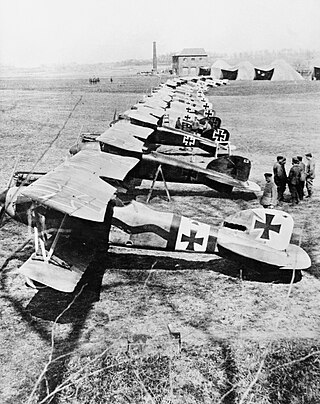
Royal Prussian Jagdstaffel 11 was founded on 28 September 1916 from elements of 4 Armee's Kampfeinsitzerkommandos 1, 2 and 3 and mobilized on 11 October as part of the German Air Service's expansion program, forming permanent specialised fighter squadrons, or "Jastas". It became the most successful fighter squadron in the Luftstreitkräfte.
JagdgeschwaderI of World War I, was a fighter wing of the German Luftstreitkräfte, comprising four Jastas. The first unit of its type formed under that classification, JG I was formed on 24 June 1917, with Manfred von Richthofen as commanding officer, by combining Jastas 4, 6, 10 and 11. JG I became known as "The Flying Circus" or "Richthofen's Circus" because of the bright colours of its aircraft, and perhaps also because of the way the unit was transferred from one area of Allied air activity to another – moving like a travelling circus in trains, and frequently setting up in tents on improvised airfields.
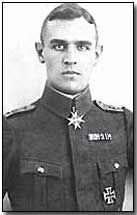
Franz Büchner PlM was one of the most successful German fighter aces of the First World War, shooting down 40 enemy aircraft. He began his military career as a 16-year-old infantryman. His doughty exploits earned him a battlefield commission just after his 18th birthday, in early 1916. After being wounded and invalided from the infantry, he joined the Imperial German Air Service. Once he progressed to become a fighter pilot flying a Fokker D.VII, he initially struggled to gain his first aerial victories. Something clicked after his fifth victory, and he began to regularly shoot down enemy airplanes, scoring 35 victories between 1 July and 22 October 1918. Most notably, he shot down four SPADs on 26 September. He survived the war, but died in action in 1920 while combating communist revolutionaries near Leipzig.

Rittmeister Carl Bolle was a German fighter ace with 36 aerial victories during World War I and a recipient of the Order Pour le Mérite, Prussia's highest award for bravery. He became a Jagdstaffel commander during that war, and an advisor to the Luftwaffe during World War II.
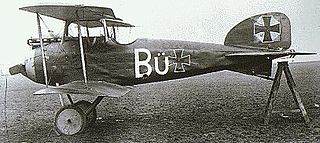
Jasta 2 was one of the best-known German Luftstreitkräfte squadrons in World War I. Its first commanding officer was the great aerial tactician Oswald Boelcke, and it was the incubator of several notable aviation careers.

Major Josef Mai Iron Cross First and Second Class, was a World War I fighter pilot credited with 30 victories.
Generalmajor Hermann Frommherz Military Order of St. Henry, Royal House Order of Hohenzollern, Knight's Cross of the Military Karl-Friedrich Merit Order, began his military career in World War I as a German ace fighter pilot. He was credited with 32 victories. During World War II he was involved in the German takeover of Czechoslovakia and rose to become a Luftwaffe Generalmajor.
Arthur Laumann was a German World War I flying ace who scored 28 victories in just over three months. He rose to become Air Attache to Greece and Yugoslavia during World War II, raising to a final rank of LuftwaffeGeneralmajor.

Hans Kirschstein, winner of the Pour le Merite, Royal House Order of Hohenzollern, and the Iron Cross, 1st and 2nd class, was a German lieutenant and World War I flying ace credited with 27 aerial victories.

Leutnant Kurt Wüsthoff was a German fighter ace credited with 27 listed confirmed victories during World War I. Enlisting prewar at age 16 1/2, after learning to fly during the events leading to the war's start, he was posted as a flight instructor until adjudged old enough for combat. He then flew two-seater reconnaissance craft for a year and a half during 1916 and 1917 before training as a fighter pilot in June 1917. Assigned to Jagdstaffel 4, he shot down 24 enemy airplanes and three observation balloons between 15 June 1917 and 10 March 1918. Promoted to command of his squadron on 10 January 1918, he proved immature and plagued by combat stress reaction. Relieved of his post on 16 March 1918 by Manfred von Richthofen, he returned to combat duty with Jagdstaffel 15 in June, only to be shot down and captured on the 17th. He survived the war and a long convalescence, only to die after crashing while performing aerobatics on 18 July 1926. He died of his injuries five days later.
Leutnant Georg von Hantelmann was a German fighter ace credited with winning 25 victories during World War I. It was notable that these victories included three opposing aces shot down within the same week in September 1918–David Putnam, Maurice Boyau, and Joseph Wehner.

LeutnantHans Weiss was a German World War I flying ace credited with 16 aerial victories.
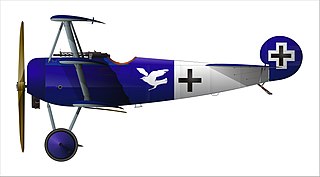
Royal Prussian Jagdstaffel 15, commonly abbreviated to Jasta 15, was a "hunting group" of the Luftstreitkräfte, the air arm of the Imperial German Army during World War I. The unit would score over 150 aerial victories during the war, at the expense of seven killed in action, two killed in flying accidents, three wounded in action, one injured in a flying accident, and two taken prisoner of war.
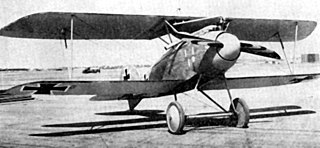
Royal Prussian Jagdstaffel 4, commonly abbreviated to Jasta 4, was a "hunting group" of the Luftstreitkräfte, the air arm of the Imperial German Army during World War I. The unit would score 192 confirmed victories; in turn, it would suffer 11 killed in action, 9 wounded in action, and two taken prisoner of war. It was one of the units in the famed Flying Circus.

Royal Prussian Jagdstaffel 6 was one of the original units of the Luftstreitkräfte, the air arm of the Imperial German Army during World War I.
Royal Prussian Jagdstaffel 13 was a World War I "hunting group" of the Luftstreitkräfte, the air arm of the Imperial German Army during World War I. The unit would score 108 aerial victories during the war, at the expense of twelve killed in action, one killed in a flying accident, two wounded in action, and two taken prisoner of war.

Royal Prussian Jagdstaffel 12 was a World War I "hunting group" of the Luftstreitkräfte, the air arm of the Imperial German Army during World War I. As one of the original German fighter squadrons, the unit would score 155 aerial victories during the war, at the expense of seventeen killed in action, eight wounded in action, and one taken prisoner of war.
Oberst Paul Aue was a World War I flying ace from the Kingdom of Saxony in the German Empire. Partial records of his early aviation career credit him with 10 aerial victories. He would join the nascent Luftwaffe during the 1930s and serve Germany through World War II. He died in a Soviet prison camp in 1945.
Jagdgeschwader II was the Imperial German Air Service's second fighter wing. Established because of the great success of Manfred von Richthofen's preceding Jagdgeschwader I wing, Jagdgeschwader II and Jagdgeschwader III were founded on 2 February 1918. JG II was assigned four squadrons nominally equipped with 14 aircraft each. The new wing was supposed to be fully operational in time for an offensive slated for 21 March 1918. Named to raise and lead it was 23-victory flying ace Hauptmann Adolf von Tutschek. However, he was killed in action on 15 March 1918.
References
- ↑ GenWiki, Verlustlisten 1. Weltkrieg
- ↑ O'Connor, "Aviation Awards," pp. 174-191
- ↑ O'Connor, "Aviation Awards," pp. 174-191
- 1 2 "Franz Hemer". www.theaerodrome.com. Retrieved 2019-09-14.
- 1 2 'Richthofen's Circus': Jagdgeschwader. Bloomsbury USA. 2004. ISBN 978-1-84176-726-0.
- 1 2 Above the Lines: The Aces and Fighter Units of the German Air Service, Naval Air Service and Flanders Marine Corps 1914 - 1918, pp. 126-127
- ↑ Manes, Philipp (1941). Die deutsche Pelzindustrie und ihre Verbände 1900–1940, Versuch einer Geschichte (in German). Vol. 4. Berlin. p. 336.
{{cite book}}: CS1 maint: location missing publisher (link)